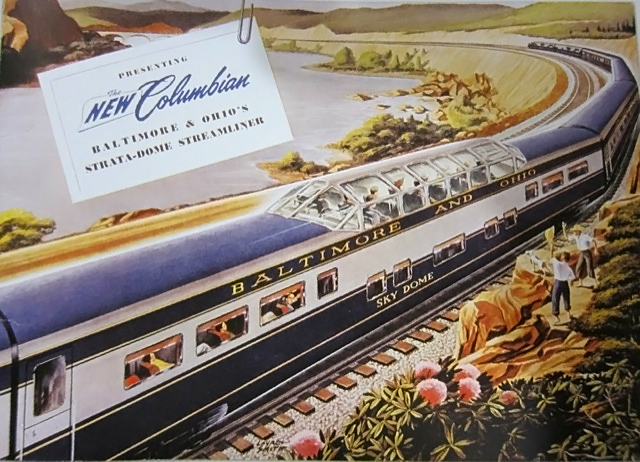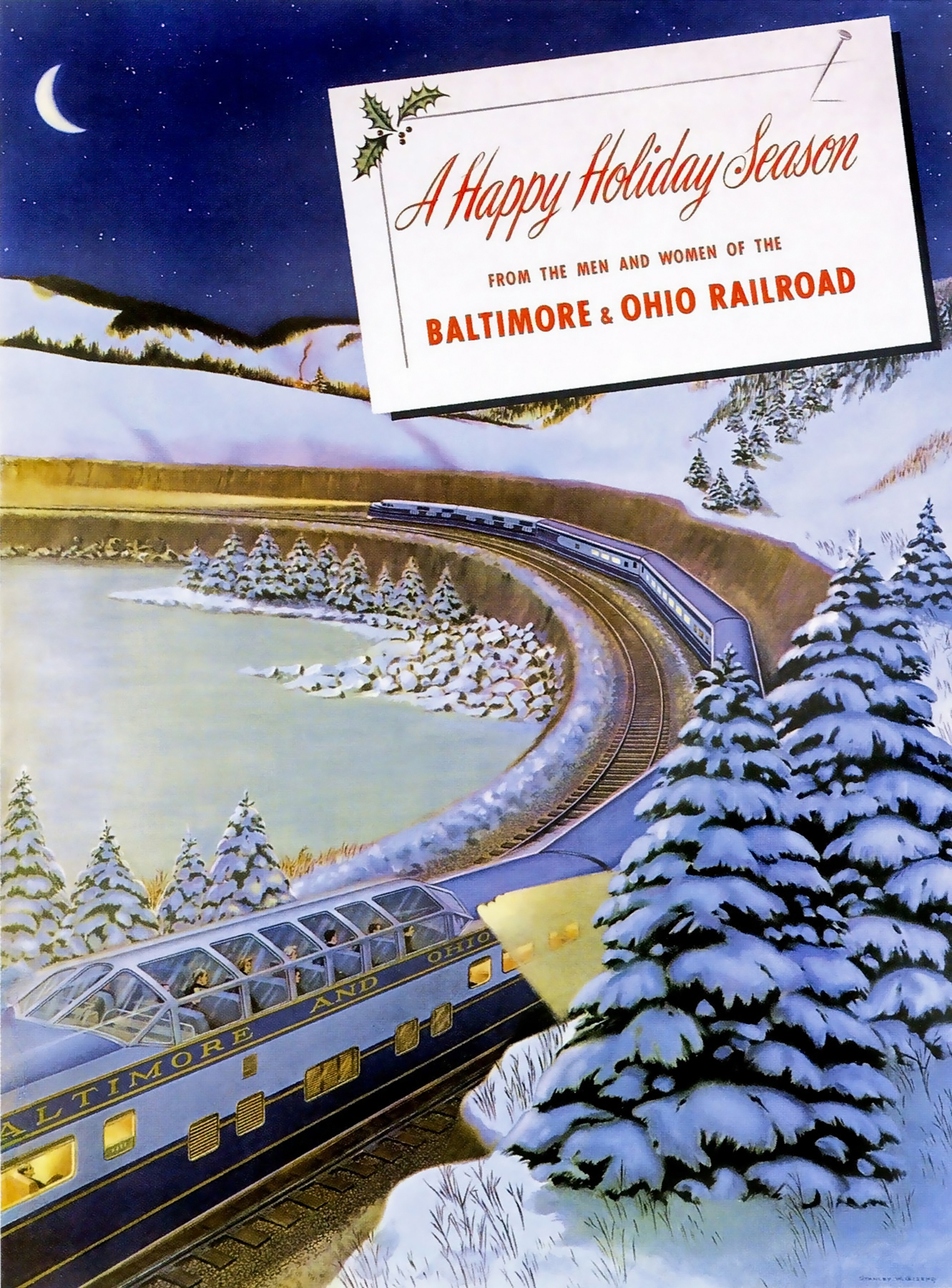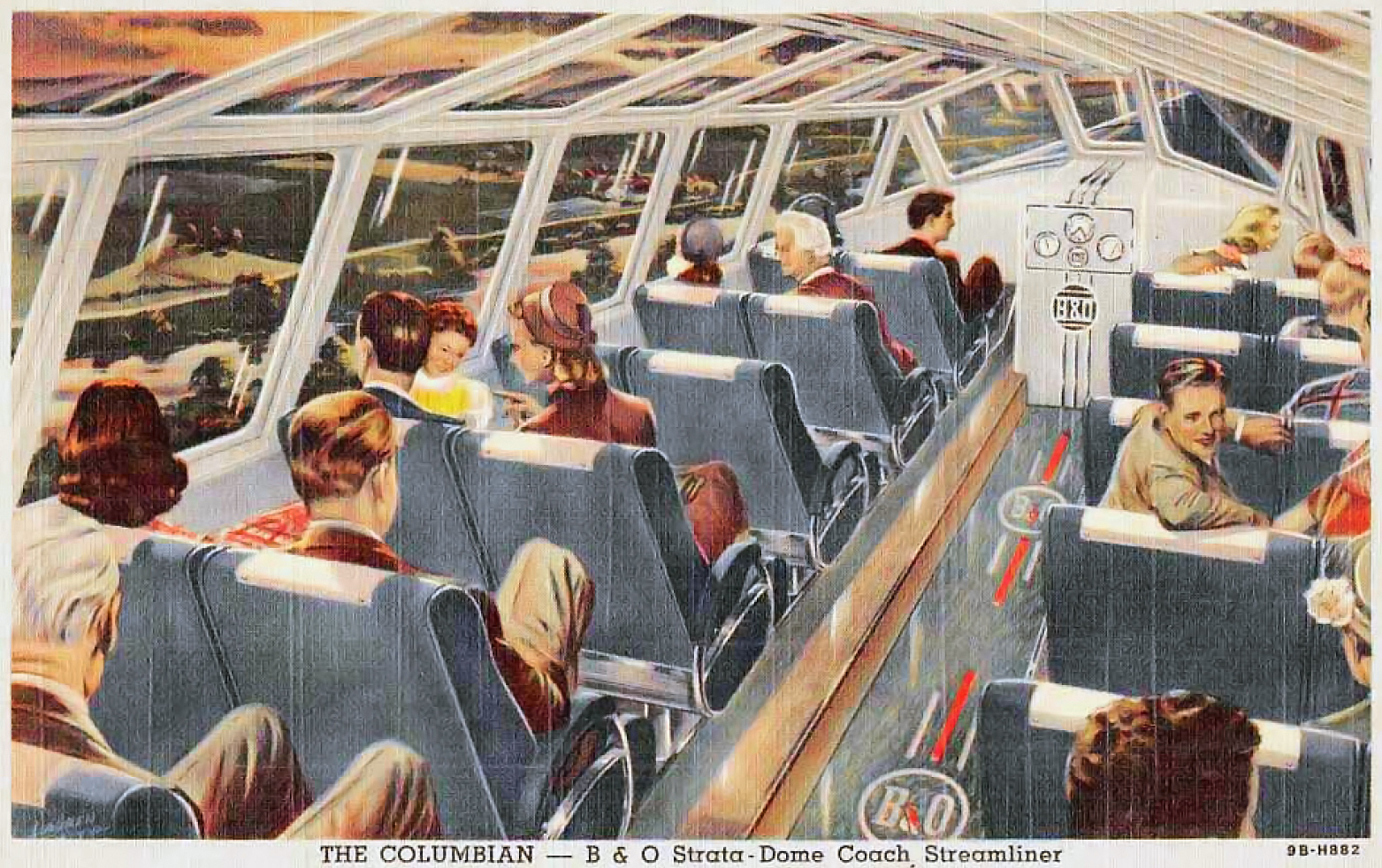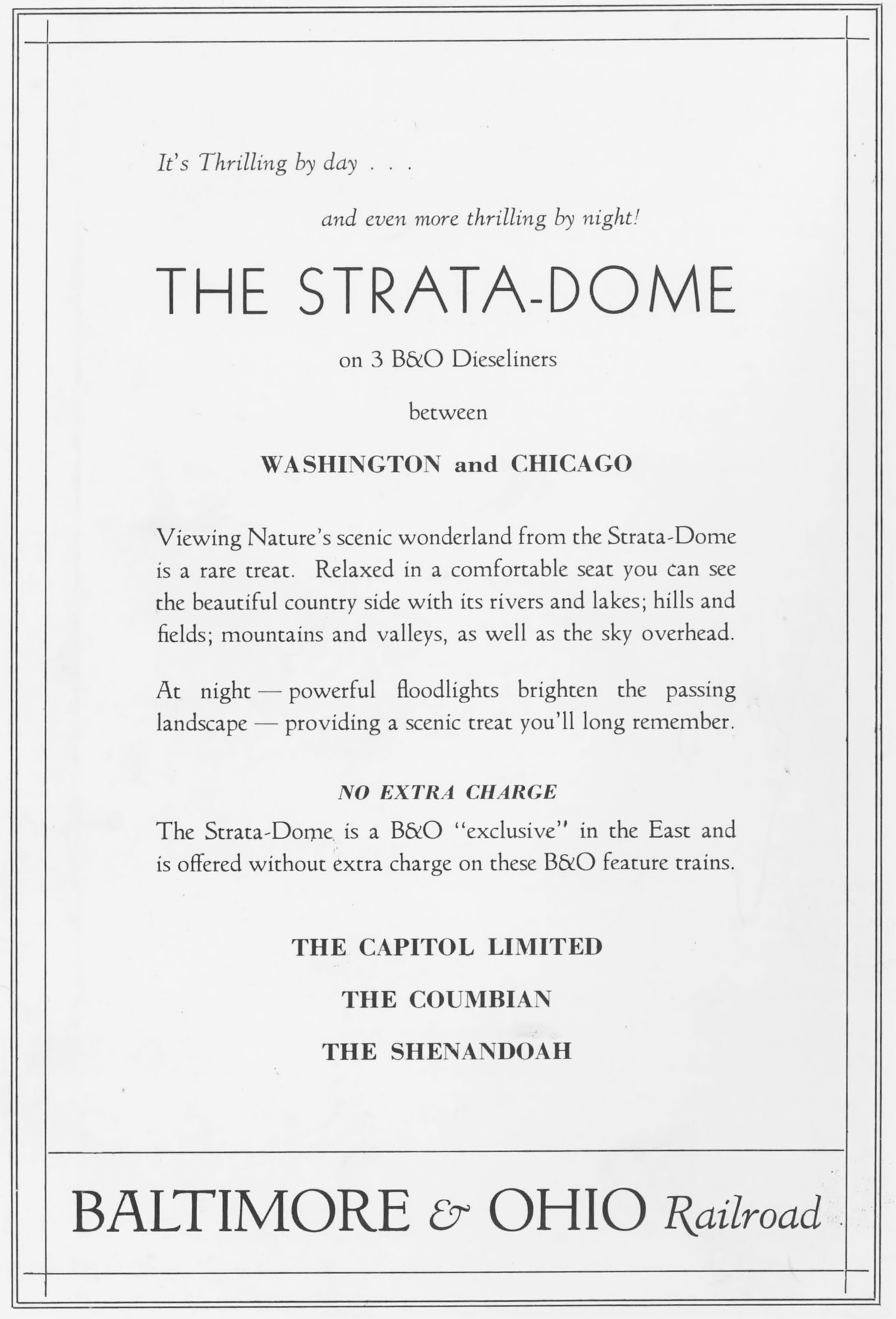"Strata-Dome" Railcars (B&O): Design, Photos, History
Published: February 7, 2025
By: Adam Burns
The mid-20th century was a transformative era for rail travel in the United States. This period saw the development and implementation of technologies that reshaped the passenger experience on railroads.
Among the most innovative of the time was the Strata-Dome, a marvel of engineering uniquely associated with the Baltimore & Ohio Railroad (B&O).
Strata-Domes were pioneering concept in the east where low clearances precluded the design from being utilized; in fact, for many years they were the only domes in service in the Eastern U.S.
The cars built built upon the success of the Chicago, Burlington & Quincy's "Vista-Domes" in the West as railroads sought any and all innovations possible in retaining ridership in the postwar era. The Strata-Domes entered service on the reequipped Columbian in the spring of 1949 and were an immediate success. Today, four of the cars preserved.

Design and Features
The Strata-Domes were part of the B&O's commitment to revitalize its passenger services following World War II. Designed by the Pullman-Standard, these dome cars were crafted to offer passengers unparalleled views of their journey.
The Strata-Dome's most distinctive feature was its raised, glass-enclosed dome section. This section provided panoramic vistas for passengers, an experience that was unprecedented at the time.
The expansive glass roof spanned the entire width of the car, allowing natural light to flood the interior while offering unobstructed, 360-degree views of the surrounding landscapes.
Original Strata-Dome Fleet
Pullman-Standard manufactured th original two pioneering cars. The dome section accommodated 24 passengers, while the lower level incorporated two lounges and provided coach seating for 42 individuals.
To meet the reduced clearance requirements on rail lines in the Eastern United States, the dome's height on the cars was lowered to 21 inches, compared to the typical 28 inches Visat-Domes introduced a few years prior.
These cars were designated #5550-#5551 and named High Dome and Sky Dome, respectively. Located at the front of each car, the B&O installed a speedometer, clock, altimeter, and barometer.
Fleet Expansion
In December 1950, the railroad acquired three dome-sleeper cars from the Chesapeake & Ohio. They were constructed by the Budd Company for the Chessie, a luxury streamliner planned to travel between Washington, D.C., and Cincinnati, Ohio, which was discontinued prior to commencing service.
Each car featured seating for 24 in the dome, along with the configuration of 3 drawing rooms, 5 roomettes, and 1 bedroom on the lower level. They were numbered 7600–7602 and named Moonlight Dome, Starlight Dome, and Sunlight Dome.
In 1952, the B&O further augmented the cars with floodlights to facilitate the observation of the landscape during nighttime travel.
Service History
The original pair of Strata-Domes commenced service on the newly reequipped Columbian on May 5, 1949. In doing so the B&O became the first eastern railroad to employ domes in service. Height restrictions precluded such cars from being widely used east of the Mississippi River, largely due to early tunnel construction that did not allow for sufficient height clearances.
Interestingly, as Kirk Reynolds and Dave Oroszi note in their book "Baltimore & Ohio Railroad," the cars' low-profile domes did have their drawbacks; notably that for safety reasons guests could not occupy the upper section when operating under the Pennsylvania Railroad's catenary in the Washington, D.C. area.
During the 1960s, the B&O occasionally leased the trio of Budd-manufactured dome-sleepers to other railroads, including the Atlantic Coast Line (later Seaboard Coast Line) and Canadian National.
The ACL implemented these domes on its Florida Special, though they operated exclusively on the Richmond-Miami route due to tunnel clearance restrictions in Washington.
These domes were pioneering in their operation along the Florida corridor. In September 1969, the SCL purchased all three domes from the B&O, alongside eight standard sleeping cars, reinstating them on the Florida Special.
The B&O later modified the two dome coaches with the addition of a snack bar facility in one of their lower-level lounges. These cars also serviced other B&O routes, such as the then-Cincinnati to Detroit Cincinnatian.
Notably, the High Dome, emblazoned with "American Railroads 1869–1969" in blue paint, participated in the 1969 Golden Spike Centennial Limited, commemorating the centenary of the first U.S. transcontinental railroad.
Impact On The B&O
The introduction of the Strata-Dome represented a strategic move by the ever-innovative B&O to bolster its passenger service offerings.
At a time when the industry was grappling with declining ridership due to the rise of personal automobile ownership and increased domestic air travel, the cars served as a unique selling point to attract travelers.
By elevating the passenger experience, these domes played a crucial role in maintaining a competitive edge for the B&O. They appealed particularly to leisure travelers and tourists seeking a unique and scenic travel option.
The Strata-Domes were a celebration of the journey itself, rather than just a means to get from point A to point B. Through this innovative approach, the B&O managed to hold its ground during a challenging time for the industry.
Final Years
The two original Strata-Domes were featured in the final run of the Capitol Limited on April 30, 1971, preceding its discontinuation at the advent of Amtrak.
Amtrak subsequently acquired all five cars, deploying them across various services in the 1970s. The High Dome met its demise in a 1975 accident and was ultimately scrapped in 1980. By October 1981, Amtrak retired its final car, the Starlight Dome. Presently, the four remaining cars are under private ownership.
Legacy and Historical Significance
While the widespread fusion of domed cars into American railroads began to diminish with the overall decline of long-distance rail travel in the latter half of the 20th century, the Strata-Dome left a lasting impression.
They epitomized the height of luxury and innovation in passenger rail travel during the post-war era. Beyond their immediate impact on the B&O and its clientele, the cars have cemented their place in the broader history of American railroading.
The legacy of the Strata-Dome continues today through its influence on modern scenic and tourist rail lines. While few original cars still operate in their intended capacity, the concept of offering passengers an immersive and enjoyable travel experience lives on.
Recent Articles
-
New York - Murder Mystery - Dinner Train Rides
Dec 13, 25 10:30 AM
New York State, renowned for its vibrant cities and verdant countryside, offers a plethora of activities for locals and tourists alike, including murder mystery train rides! -
Pennsylvania - Murder Mystery - Dinner Train Rides
Dec 13, 25 10:25 AM
Pennsylvania, steeped in history and industrial heritage, offers a prime setting for a unique blend of dining and drama: the murder mystery dinner train ride. -
Ohio - Murder Mystery - Dinner Train Rides
Dec 13, 25 10:14 AM
The murder mystery dinner train rides in Ohio provide an immersive experience that combines fine dining, an engaging narrative, and the beauty of Ohio's landscapes.






